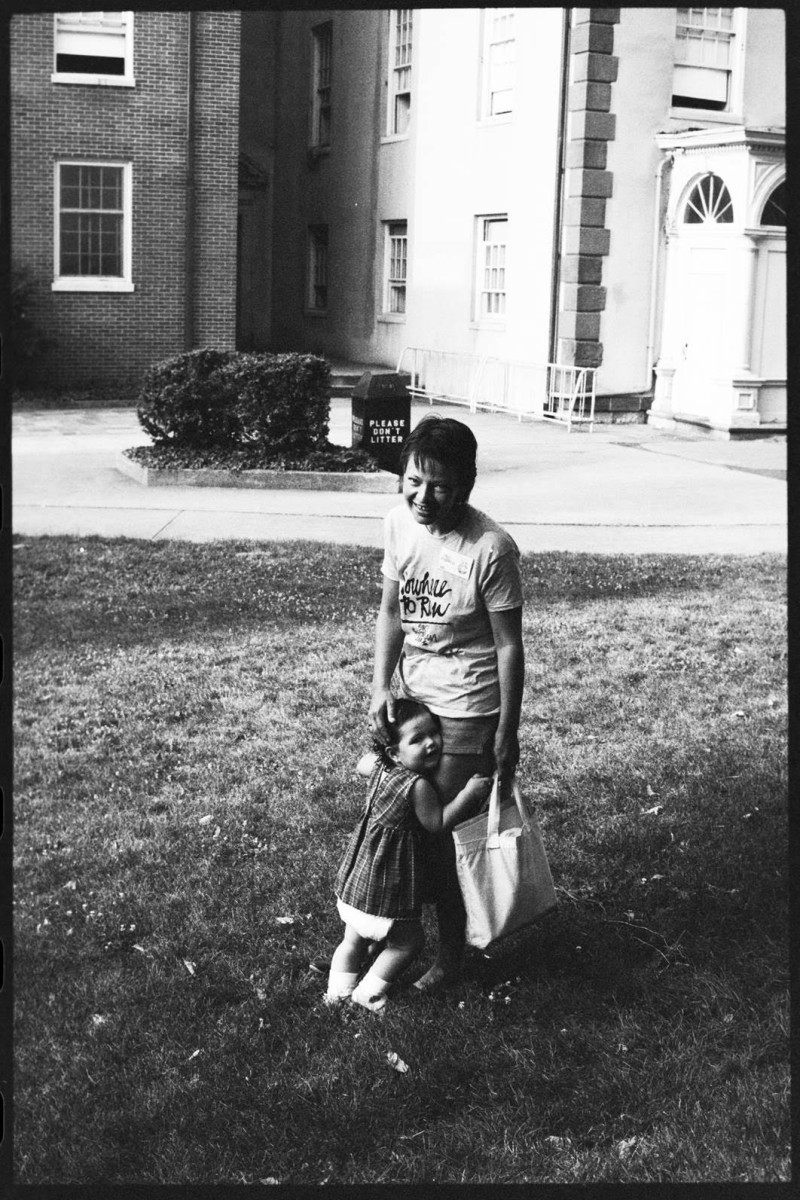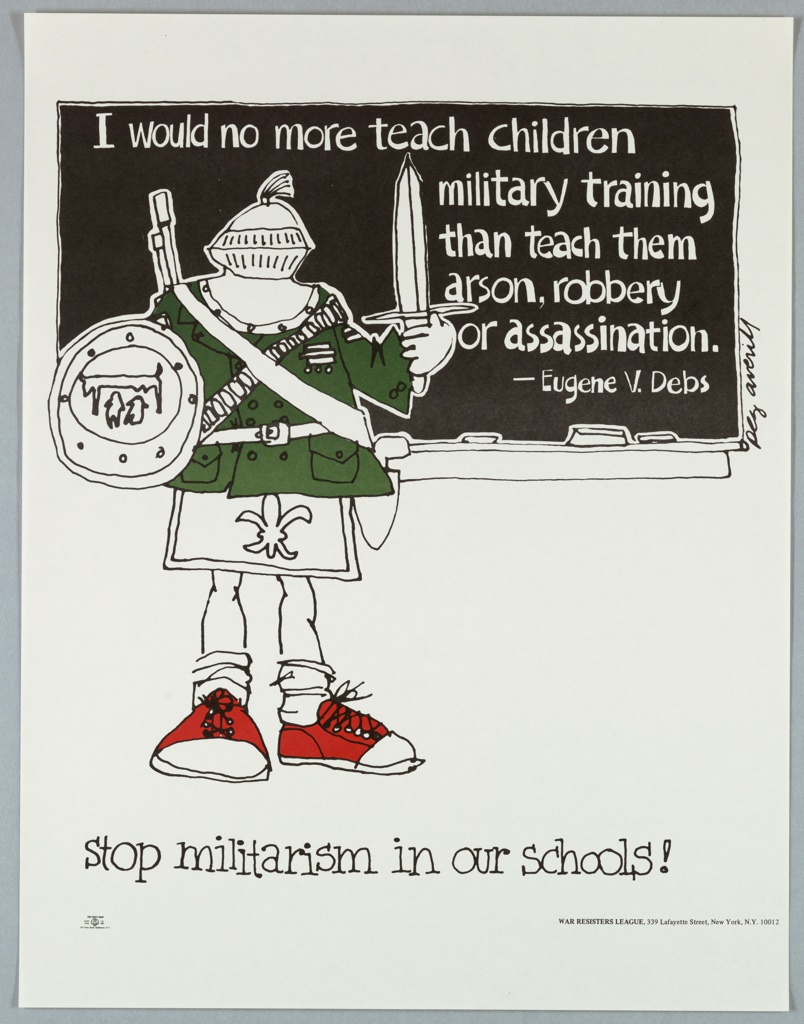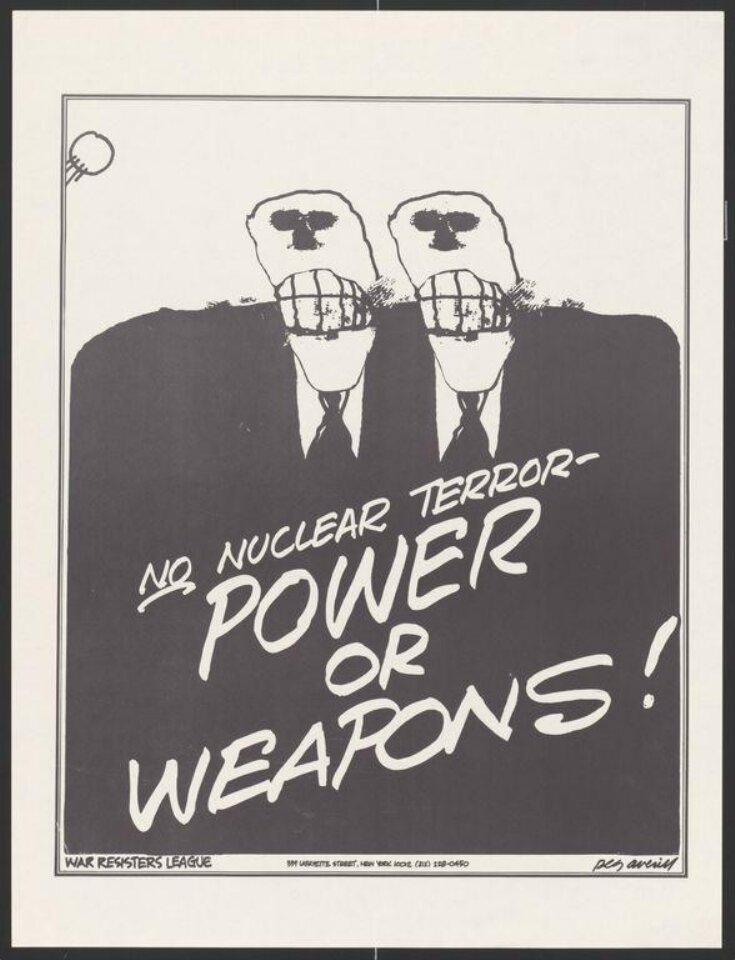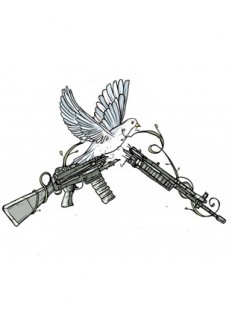“Stop Militarism in Our Schools!” and the Protest Art of Peg Averill
Peg Averill’s “Stop Militarism in Our Schools!” poster excites me not only for its anti-conscription stance and connections to the Vietnam War, but also for its contemporary relevance, art historical references, and uniquely gender-ambiguous figure.
Averill’s “Stop Militarism in Our Schools!” poster immediately stood out to me when choosing a Cooper Hewitt collection object for research. Although Peg sadly passed away in 1993 at the age of 44, she contributed a large amount of impressive artwork to WRL and a variety of other organizations. Her contributions can be seen most prominently as posters and graphics, but she was also an intelligent and poignant writer.
While living in DC during the early 1970s, she helped found “Art for the People,” a typesetting and graphic design collective. Later, in Baltimore, she was a member of the Jonah House Collective, a faith-based pacifist organization. Alongside her work in the peace and anti-war movements, Averill also worked professionally as an art director at Rolling Stone while in New York before moving back to her native Ohio to raise her daughter.
 Peg contributed substantially to WRL’s efforts through protest art—a significant fixture within WRL—and promoted its core tenet of anti-war ideals while also touching upon racism, feminism, and other social issues from a counter-cultural perspective. She also served as a WIN: Peace and Freedom Through Nonviolent Action magazine staffer, and contributed to The Nonviolent Activist, a WRL publication, and The Liberation News Service, among others. “Stop Militarism in Our Schools!” is just one work from a series of around seven graphics that Peg created for WRL in the 70s and 80s to function as both a fundraising tool and a signaling of the movement/organization’s greatest concerns.
Peg contributed substantially to WRL’s efforts through protest art—a significant fixture within WRL—and promoted its core tenet of anti-war ideals while also touching upon racism, feminism, and other social issues from a counter-cultural perspective. She also served as a WIN: Peace and Freedom Through Nonviolent Action magazine staffer, and contributed to The Nonviolent Activist, a WRL publication, and The Liberation News Service, among others. “Stop Militarism in Our Schools!” is just one work from a series of around seven graphics that Peg created for WRL in the 70s and 80s to function as both a fundraising tool and a signaling of the movement/organization’s greatest concerns.
In “Stop Militarism in Our Schools!,” Averill’s choice to highlight notable socialist Eugene V. Debs promoted socialist beliefs alongside that of anti-war and peace. I also believe the gender ambiguity of the central character to have been intentional, given Averill’s active role in the women’s liberation movement and her self-identification as a feminist. There is also historical iconography of the French fleur de lis and ancient Rome’s Romulus and Remus.
The broader cultural attitudes towards women within the 60s and 70s were also largely significant and impactful to Peg (among other contemporary protest artists). Her design choices reflect her identity and lived experience as a woman in the 1970s. They appear not only in “Stop Militarism in Our Schools!”, but in her larger body of work as well.
Based on their symbols of gender equality, women’s rights, and the promotion of socialism, Peg’s prolific body of protest art represents the way in which art can be used to not only spread counter-cultural ideals, but to also promote their acceptance.
– blog post by Chloe Buergenthal
Photo (Above): Peg Averill with her daughter at the 1983 WRL National Conference (photo by Ed Hedemann)
“capital punishment means them without the capital get the punishment” – poster by Peg Averill
“NO NUCLEAR TERROR- POWER OR WEAPONS!” – poster by Peg Averill
wrods
Share





